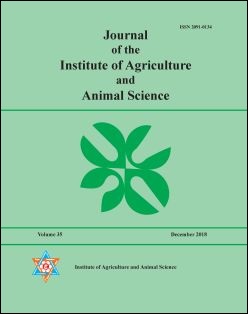Effort to Enhance Storability of Nepali Sweet Orange (Citrus sinensis) under Different Storage Conditions
DOI:
https://doi.org/10.3126/jiaas.v36i1.48420Keywords:
cellar, cool bot, post-harvest loss, zero energyAbstract
Nepali sweet orange (Citrus sinensis) cultivars are grown in mid hills and are considered to be exquisite in taste. It is mostly harvested during December-January that fetches poor market price. Farmers try to delay picking by retaining fruit on tree compromising tree health and production for next season. Further in some places farmers try to store in normal room and cellar storage facility with considerable amount of post-harvest loss. Recently cool bot storage facility has been introduced to storage horticulture commodities. Thus an experiment was set to study the effect of various storage structure on shelf life of sweet orange at National Citrus Research Program, Dhankuta, Nepal. Four types of storage facilities (zero energy, cellar, cool bot and normal room) were used to store sweet orange fruit over 90 days. Freshly picked Dhankuta Local sweet orange fruit with small pedicel intact were used for this study in RCB design with four treatments replicated four times. Physiological loss in weight (PLW), fruit rot percent, juice recovery percent, TSS and TA were recorded at weekly interval. The result revealed that there was no significant difference in chemical quality parameters (TSS and TA) due to storage method. However, juice recovery and PLW was better in cool bot and cellar stored fruit with ≤15% fruit rot when waxed fruit were stored at 10-12°C with more than 85% RH. In a constant supply of electricity, cool bot storage could be better option compared to other storage facilities for sweet orange storage up to three months

